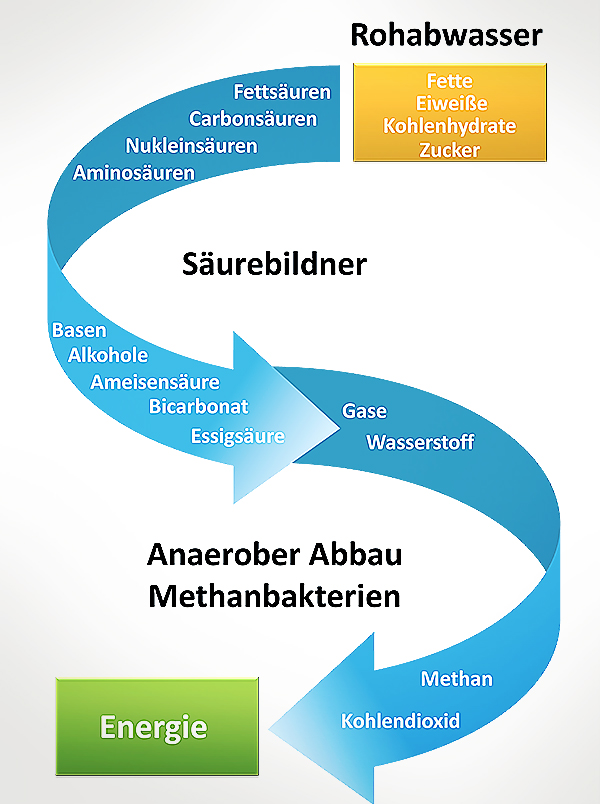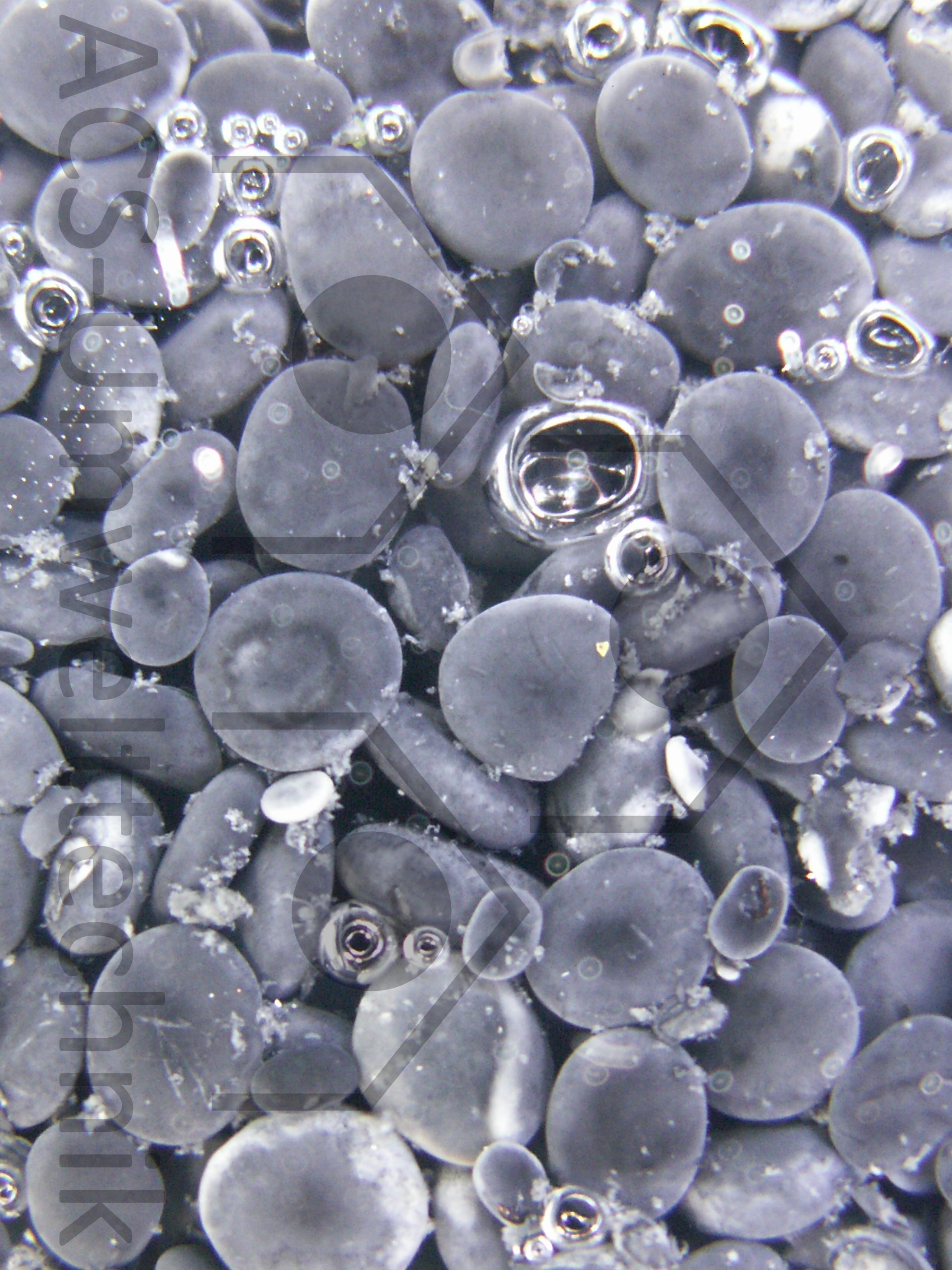
Anaerobic wastewater treatment
In anaerobic wastewater treatment, organically highly-loaded industrial wastewater is treated biologically in an oxygen-free environment. The bacteria degrade the substrate largely into CO2 and methane due to the lack of oxygen. The anaerobic degradation is divided into four degradation phases.
Phase I, hydrolysis phase:
Here the water-insoluble substances such as cellulose, proteins and nucleic acids are separated by exo-enzymes into water-soluble monomers.
Phase II, acidification phase:
Due to different microorganisms, a further degradation takes place, called acidification. This results in alcohols, organic acids, carbon and hydrogen.
Phase III, acetogenic phase:
The digestion products of the second phase, acids and alcohols, are reacted with the acetogenic bacteria to form acetic acid with the elimination of hydrogen.
Phase IV, methanogen phase:
The remaining degradation products of formic and acetic acid are converted here into methane and carbon dioxide.
Contact us
Tel: +49 77 31. 79 85 23
E-Mail: info@acs-umwelttechnik.de


